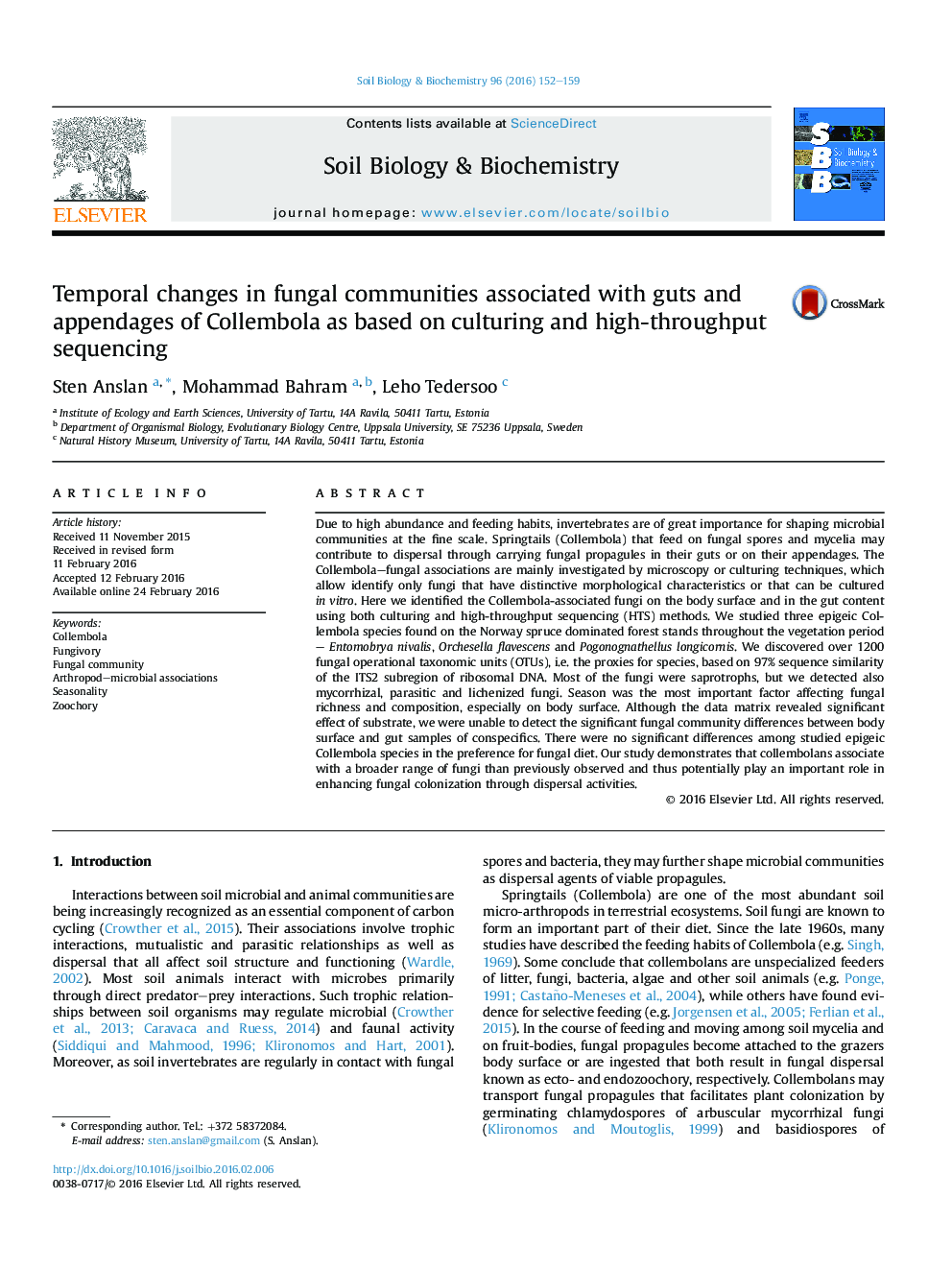| Article ID | Journal | Published Year | Pages | File Type |
|---|---|---|---|---|
| 2024357 | Soil Biology and Biochemistry | 2016 | 8 Pages |
•High-throughput sequencing revealed high richness of Collembola-associated fungi.•Season was the most important factor affecting fungal richness and composition.•Studied Collembola species did not exhibit significant differences for fungal diet.•Collembola may provide an additional dispersal method for associating microbes.
Due to high abundance and feeding habits, invertebrates are of great importance for shaping microbial communities at the fine scale. Springtails (Collembola) that feed on fungal spores and mycelia may contribute to dispersal through carrying fungal propagules in their guts or on their appendages. The Collembola–fungal associations are mainly investigated by microscopy or culturing techniques, which allow identify only fungi that have distinctive morphological characteristics or that can be cultured in vitro. Here we identified the Collembola-associated fungi on the body surface and in the gut content using both culturing and high-throughput sequencing (HTS) methods. We studied three epigeic Collembola species found on the Norway spruce dominated forest stands throughout the vegetation period – Entomobrya nivalis, Orchesella flavescens and Pogonognathellus longicornis. We discovered over 1200 fungal operational taxonomic units (OTUs), i.e. the proxies for species, based on 97% sequence similarity of the ITS2 subregion of ribosomal DNA. Most of the fungi were saprotrophs, but we detected also mycorrhizal, parasitic and lichenized fungi. Season was the most important factor affecting fungal richness and composition, especially on body surface. Although the data matrix revealed significant effect of substrate, we were unable to detect the significant fungal community differences between body surface and gut samples of conspecifics. There were no significant differences among studied epigeic Collembola species in the preference for fungal diet. Our study demonstrates that collembolans associate with a broader range of fungi than previously observed and thus potentially play an important role in enhancing fungal colonization through dispersal activities.
